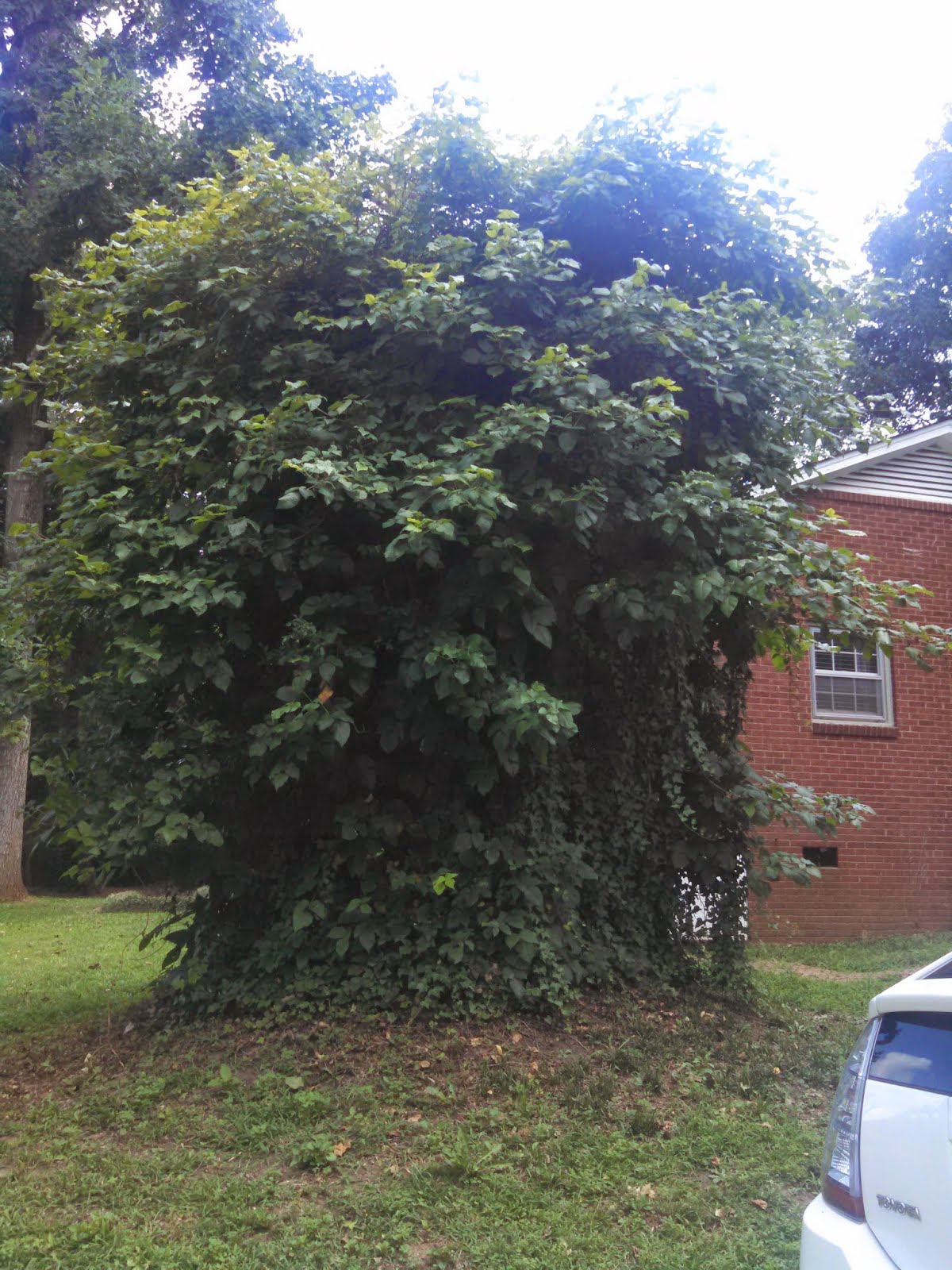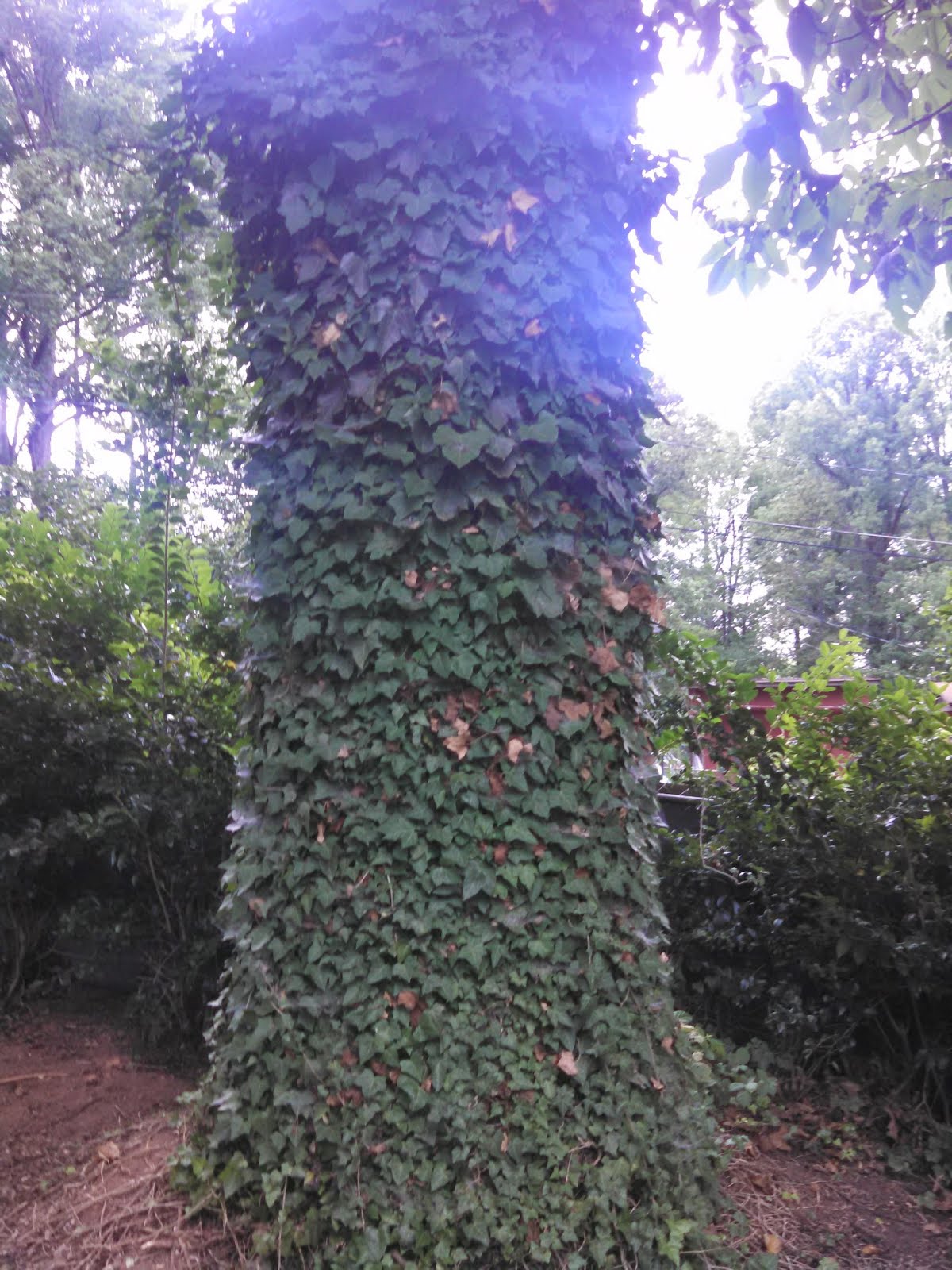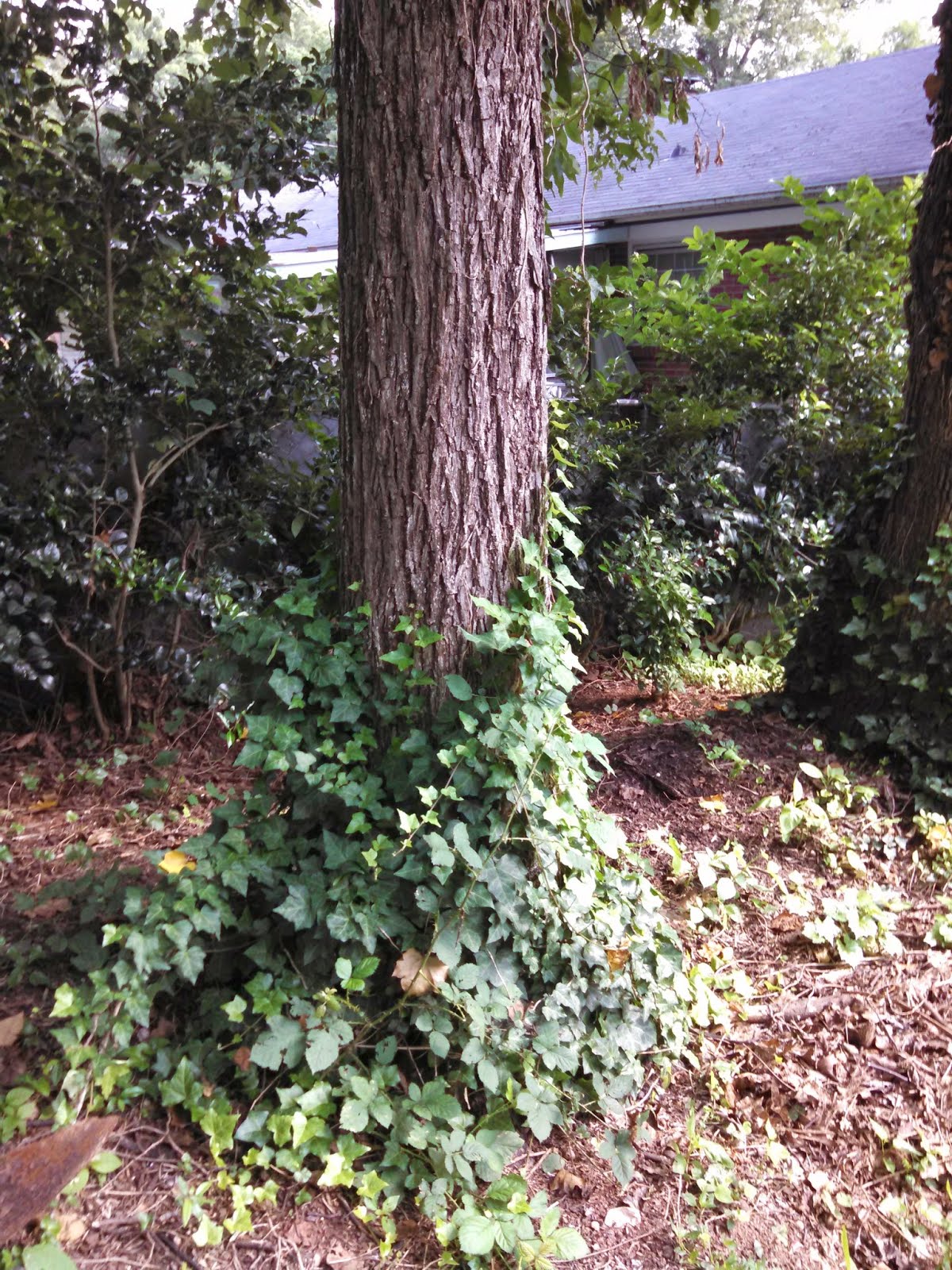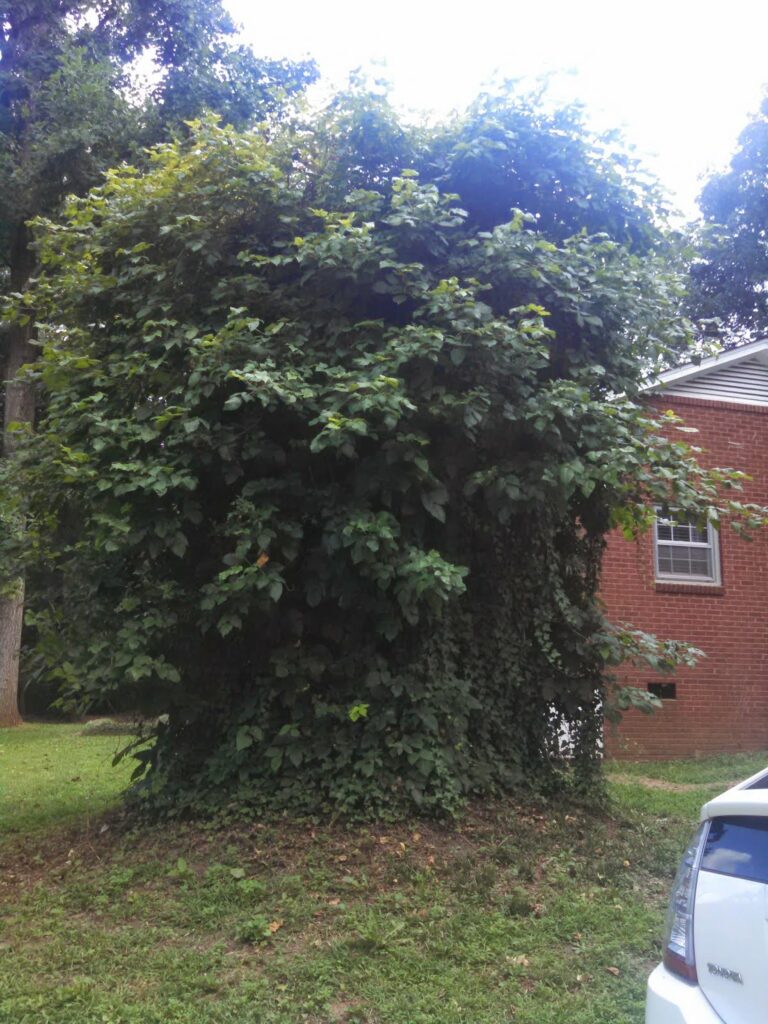
Trees and Vines
Many types of climbing vines are found throughout the Charlotte area in managed landscapes and the natural environment. Some are easy to control and play nice with neighboring plants, while others can be problematic (Many species of climbing vines in the area that affect trees are also invasive and can spread from their original location during the growing season impressively fast). Depending on the species of vine, a fair amount of work can be required to keep it from overtaking a tree or entire corner of the yard. Regardless of the vine species, there is a limit to how well established it should be allowed to become in and around trees.
A small amount of vines around the base of most trees or growing up the lower portion of the trunk is generally not cause for concern. Vines that have begun to overtake the area around a tree or cover the tree’s entire trunk and canopy can be cause for concern for several reason:
- Increased competition for the same resources in the soil between trees and vines
- Vines covering the entire base of a tree or trunk can obscure defects/issues that would otherwise be visible and possibly noticed earlier
- Established vines in a tree’s canopy can restrict proper development of smaller branches and affect the overall architecture of the canopy
- Many times a dead vine covered tree may be mistaken for a living tree due to the green leaves on many vines

Way too much ivy covering the trunk

Way too much ivy covering the trunk
Cautiously severing the vine’s connection with the ground and allowing what remains above to die is generally the best course of action when they’ve made it into a tree’s canopy. It’s fairly easy to damage a tree if vines are cut with the wrong tool or with too heavy of a hand. Using hand pruners and a handsaw where needed are preferable to a chainsaw to prevent damage. Please contact Heartwood Tree Care with any additional questions about Vines and Trees.
Tree, Vine or Cousin It?

Tree, Vine or Cousin It?
